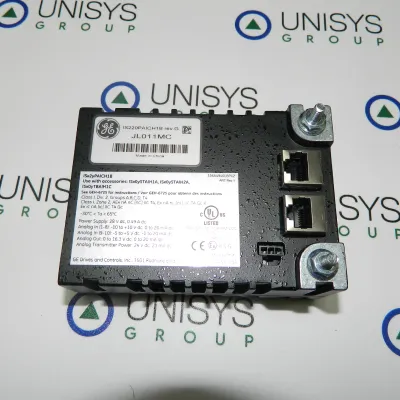

IS220PAICH1B - IO PACK ANALOG IN/OUT BASIC
Module manufactured by General Electric as part of the Mark VI/VIe Series used in gas turbine sppedtronic control systems


The IS220PAICH1B is a GE Analog I/O pack from the Mark VIe series. The PAIC pack serves as the electrical interface between one or two I/O Ethernet networks and an analog input terminal board. The pack includes a processor board shared by all Mark VIe distributed I/O packs and an acquisition board dedicated to the analog input function.
IS220PAICH1B Functional Description
Processor features
Auto-Reconfiguration
Analog Input Hardware
Analog Output Hardware